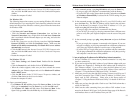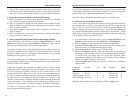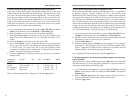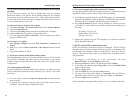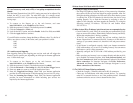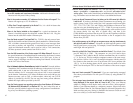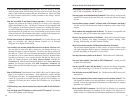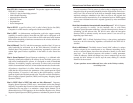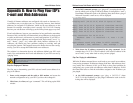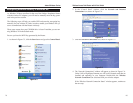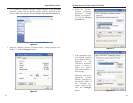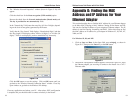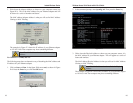
What IEEE 802.11 features are supported? The product supports the following
IEEE 802.11 functions:
• CSMA/CA plus Acknowledge protocol
• Multi-Channel Roaming
• Automatic Rate Selection
• RTS/CTS feature
• Fragmentation
• Power Management
What is BSS ID? A specific Ad-hoc LAN is called a Basic Service Set (BSS).
Computers in a BSS must be configured with the same BSS ID.
What is SSID? An Infrastructure configuration could also support roaming
capability for mobile workers. More than one BSS can be configured as an
Extended Service Set (ESS). Users within an ESS could roam freely between
BSSs while maintaining a continuous connection to the wireless network sta-
tions and Access Points.
What is ISM band? The FCC and their counterparts outside of the U.S. have set
aside bandwidth for unlicensed use in the ISM (Industrial, Scientific and
Medical) band. This presents a truly revolutionary opportunity to place con-
venient high speed wireless capabilities in the hands of users around the
globe.
What is Spread Spectrum? Spread Spectrum technology is a wideband radio
frequency technique developed by the military for use in reliable, secure, mis-
sion-critical communications systems. It is designed to trade off bandwidth
efficiency for reliability, integrity, and security. In other words, more band-
width is consumed than in the case of narrowband transmission, but the trade-
off produces a signal that is, in effect, louder and thus easier to detect, pro-
vided that the receiver knows the parameters of the spread-spectrum signal
being broadcast. If a receiver is not tuned to the right frequency, a spread-
spectrum signal looks like background noise. There are two main alternatives,
Direct Sequence Spread Spectrum (DSSS) and Frequency Hopping Spread
Spectrum (FHSS).
What is DSSS? What is FHSS? And what are their differences? Frequency
Hopping Spread Spectrum (FHSS) uses a narrowband carrier that changes
frequency in a pattern that is known to both transmitter and receiver. Properly
synchronized, the net effect is to maintain a single logical channel. To an
unintended receiver, FHSS appears to be short-duration impulse noise. Direct
Sequence Spread Spectrum (DSSS) generates a redundant bit pattern for each
bit to be transmitted. This bit pattern is called a chip (or chipping code). The
longer the chip, the greater the probability that the original data can be recov-
ered. Even if one or more bits in the chip are damaged during transmission,
statistical techniques embedded in the radio can recover the original data
without the need for retransmission. To an unintended receiver, DSSS appears
as low power wideband noise and is rejected (ignored) by most narrowband
receivers.
Would the information be intercepted while transmitting on air? WLAN features
two-fold protection in security. On the hardware side, as with Direct
Sequence Spread Spectrum technology, it has the inherent security feature of
scrambling. On the software side, the WLAN series offers the encryption
function (WEP) to enhance security and access control. Users can set it up
depending upon their needs.
What is WEP? WEP is Wired Equivalent Privacy, a data privacy mechanism
based on a 40/64 bit shared key algorithm, as described in the IEEE 802.11
standard.
What is a MAC Address? The Media Access Control (MAC) address is a unique
number assigned by the manufacturer to any Ethernet networking device,
such as a network adapter, that allows the network to identify it at the hard-
ware level. For all practical purposes, this number is usually permanent.
Unlike IP addresses, which can change every time a computer logs on to the
network, the MAC address of a device stays the same, making it a valuable
identifier for the network.
If your questions are not addressed here, refer to the Linksys website,
www.linksys.com.
Instant Wireless
®
Series
Wireless Access Point Router with 4-Port Switch
71 72




